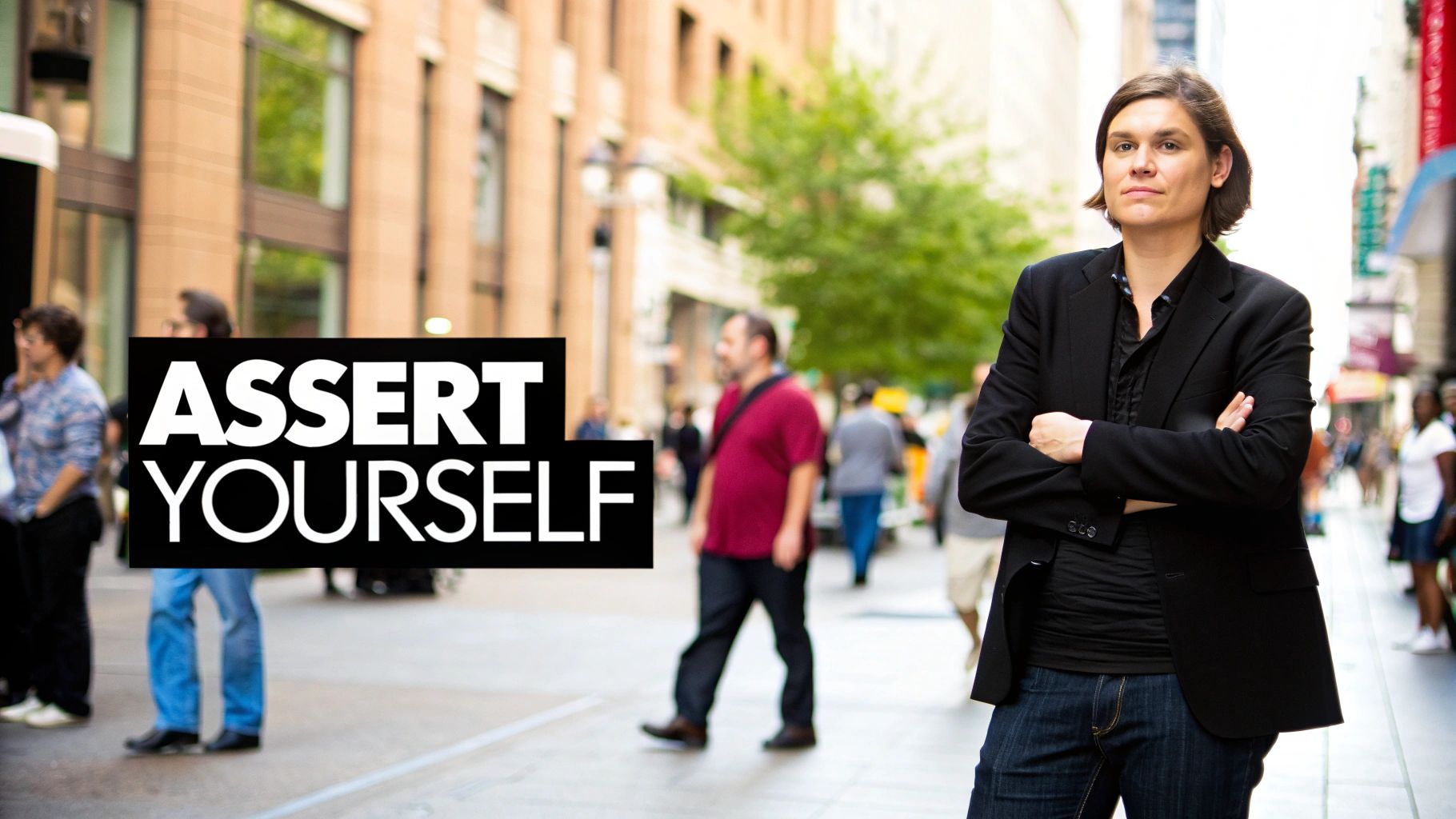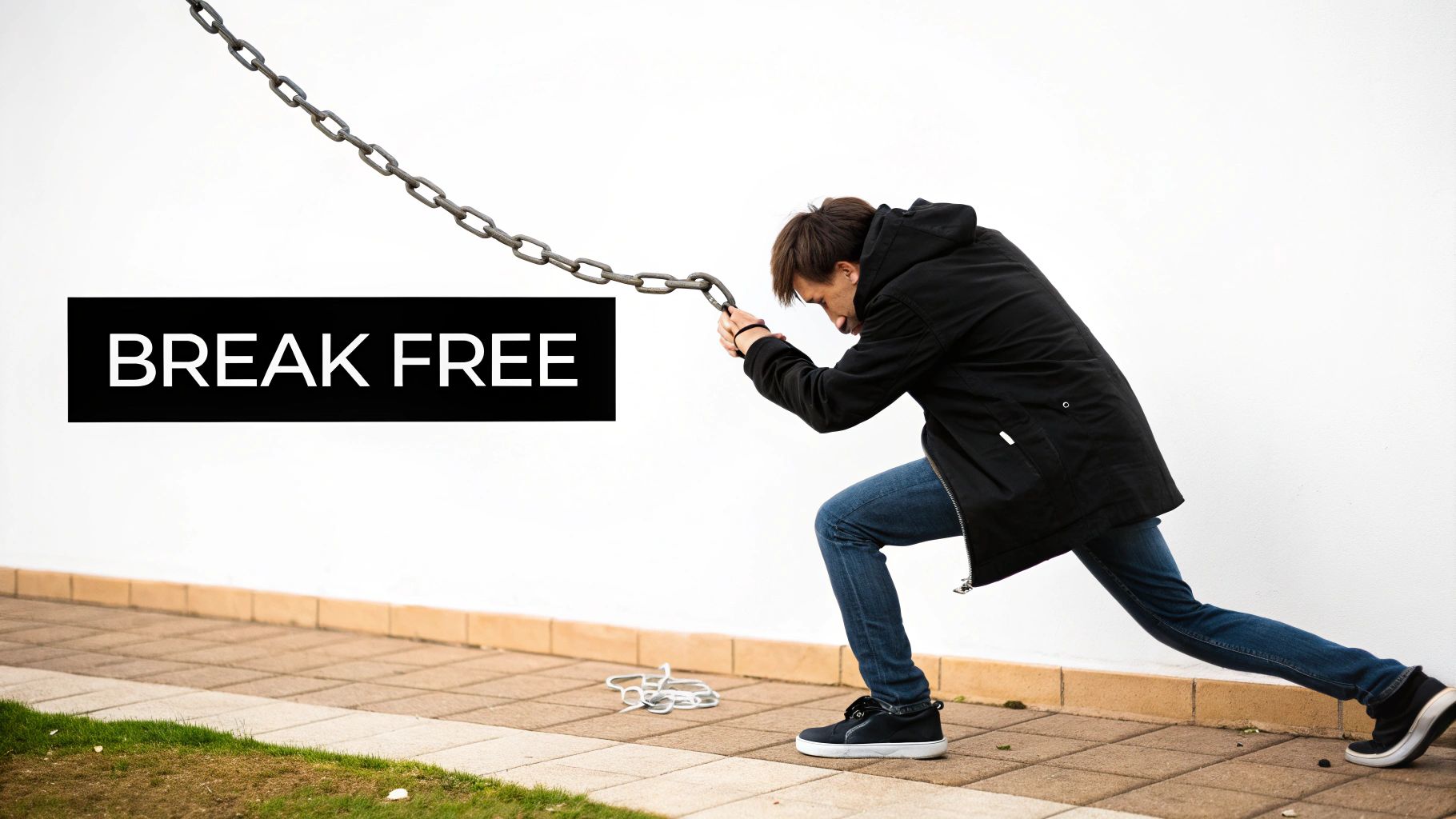The Psychology Behind Powerful Self-Advocacy

Being your own advocate requires more than just finding the right words – it's deeply rooted in your mindset and emotional patterns. When you understand the psychology behind self-advocacy, you can build genuine confidence and communicate your needs effectively. Let's explore the key psychological elements that help you stand up for yourself authentically.
Understanding Your Internal Narrative
The stories we tell ourselves shape how we show up in challenging situations. Think about a time when someone dismissed your ideas – that experience likely created beliefs about speaking up that still influence you today. These internal narratives often hold us back more than external obstacles. The good news? Once you identify these limiting beliefs, you can actively work to change them.
The Power of Self-Worth
Your sense of self-worth forms the foundation for effective self-advocacy. When you truly believe your needs and opinions matter, it shows in how you communicate. This isn't about becoming demanding or self-centered. Rather, it's recognizing that your perspective deserves consideration, just like anyone else's. Building genuine self-worth helps you enter difficult conversations with natural confidence.
Assertiveness vs. Aggression
There's a clear distinction between standing up for yourself and steamrolling others. Assertiveness means expressing your needs clearly while still respecting others, while aggression involves pushing your agenda at others' expense. Think of it this way: assertiveness creates dialogue, while aggression creates conflict. Finding this balance helps you advocate for yourself while maintaining positive relationships.
Managing Confrontation Anxiety
It's completely normal to feel anxious about speaking up – most people do. But you can build your confidence through specific practices:
- Practice: Rehearse difficult conversations with a friend to build your comfort level
- Mindfulness: Stay grounded in the present moment to reduce anxiety during tough talks
- Positive Self-Talk: Replace self-doubt with encouraging thoughts that remind you of your worth
Understanding these psychological basics gives you the tools to advocate for yourself naturally and effectively. This isn't about memorizing scripts – it's about building genuine confidence from the inside out. When you combine self-awareness with practical communication skills, you can stand up for yourself while staying true to who you are.
Building Real-World Confidence Through Self-Defense

Standing up for yourself verbally is critical, but physical confidence can be just as important. Self-defense training offers a practical way to build real confidence that carries over into daily life. Let's explore how learning to protect yourself strengthens both body and mind.
The Mind-Body Connection in Self-Defense
Self-defense goes far beyond just physical techniques. At its core, it develops a mind-body connection that changes how you carry yourself and interact with the world. Learning a protective stance, for example, not only prepares you for potential threats but naturally projects confidence in everyday situations. The focused breathing and controlled movements you practice help manage stress and stay composed under pressure. As a result, these skills become valuable tools for handling challenging situations, whether they involve physical conflict or not.
Choosing the Right Self-Defense Program
Finding the right self-defense program starts with knowing what you want to achieve. Are you mainly interested in personal safety? Building workplace confidence? Different styles offer different benefits. Consider these popular options:
- Krav Maga: Quick-to-learn, practical techniques for real situations
- Aikido: Gentle yet effective moves that redirect an attacker's force
- Jiu-Jitsu: Ground-based techniques that work well for smaller people
- Boxing/Kickboxing: Builds striking skills and overall fitness
The impact of self-defense training is well-documented. For instance, a study in Innsbruck, Austria found that even a short self-defense course significantly boosted women's self-confidence. The program combined physical skills, protective stances, and core concepts – showing how these elements work together. For more details, check out this research on self-defense training effectiveness.
Beyond the Physical: Psychological Empowerment
The biggest benefit of self-defense might be the psychological empowerment it creates. Knowing you can protect yourself builds a deep sense of security that shows up in all areas of life. This confidence helps you speak up in meetings, set clear boundaries in relationships, and handle difficult conversations with grace. The physical skills become a foundation for emotional strength, creating positive changes that keep building on themselves. Many people find this shift in mindset leads to personal growth they never expected.
Mastering The Art Of Assertive Communication

Standing up for yourself effectively starts with assertive communication – expressing your thoughts and needs clearly while respecting others. Think of it as finding the sweet spot between being too passive and too aggressive. When you communicate assertively, you create healthy boundaries and build stronger relationships. Let's explore how to put this into practice.
Key Principles of Assertive Communication
Three main principles make assertive communication work. First, be honest – share your real thoughts and feelings, even when it's uncomfortable. Second, show respect by treating others as you'd like to be treated, especially during disagreements. Third, be direct by clearly stating what you need without beating around the bush. These three elements help you communicate in a way that's both strong and considerate.
Practical Techniques for Standing Up for Yourself
Real-world assertiveness relies on specific techniques you can practice daily. Try using "I" statements – instead of "You never listen," say "I feel unheard when I'm interrupted." This small change shifts the conversation from blame to understanding. Setting clear boundaries is another key skill – learn to say no to extra work or clearly state your limits with colleagues. When others speak, practice active listening by paying attention, reflecting their points back, and asking questions to understand better.
Responding to Resistance: Maintaining Your Ground
Not everyone will welcome your newfound assertiveness, so it's important to have strategies ready. The broken record technique works well – calmly repeat your main point until it's acknowledged, helping you stay on track when others try to deflect. Fogging is another useful tool where you partly agree with someone while holding firm on your position. For example, "You might be right that the deadline is tight, but I still need a full day to do this properly." Research backs up the value of standing firm – a 2014 study showed that women who learned self-defense techniques were both less likely to face assault and more confident in protecting themselves. Read the research findings here.
Developing Your Assertiveness Style
Building your own assertive style takes practice and self-reflection. Start by noticing when you tend to be either too passive or too aggressive. Think about how you could handle these situations differently using assertive techniques. Make small changes in your daily conversations and build from there. Remember that becoming more assertive is like building a muscle – it gets stronger with regular use. Keep practicing these communication tools and you'll find yourself naturally standing up for yourself while maintaining positive relationships.
Strategic Approaches To Personal Safety

Being proactive about personal safety means more than just responding to threats. It requires developing both physical and mental skills to handle challenging situations with confidence. By building awareness and preparation habits, you can better protect yourself before problems arise.
Risk Assessment and Threat Awareness
Safety starts with paying attention. Train yourself to notice what's happening around you – unusual behavior, potential risks, and your gut feelings about situations. For example, if you feel uncomfortable in a certain place or around specific people, listen to those instincts and remove yourself. Taking action early helps prevent many dangerous situations from developing.
De-escalation Strategies: Maintaining Control
When conflicts arise, staying calm is your best first step. Speaking in a steady voice, keeping respectful body language, and acknowledging the other person's point of view can help reduce tensions quickly. While this approach works well in many cases, it's important to recognize when de-escalation isn't enough and be ready with other options.
Levels of Response: From Assertiveness to Self-Defense
Your response to threats should match the situation. Start with clear, firm communication – a direct "Stop that" often works well when someone crosses boundaries. If that's not enough, be ready to leave or call for help. Some people choose to carry personal safety tools like alarms or firearms. According to the 2021 National Firearms Survey, there are 1.67 million defensive gun uses yearly, with handguns involved in 65.99% of cases. Interestingly, 81.99% of these situations were resolved without firing shots, showing how presence alone can deter threats. Learn more details at Second Call Defense. Basic self-defense moves can provide crucial protection as a last resort.
Legal Considerations and Personal Safety
Knowing your legal rights and responsibilities is essential for self-defense. Since laws differ between locations, research the specific rules that apply where you live. Understanding these boundaries helps you make smart choices while protecting yourself, ensuring you can stand up for your rights safely and legally.
Understanding The Numbers: Self-Defense Data Analysis
Looking at real data helps us understand what actually works when it comes to protecting yourself. Careful analysis reveals which strategies are effective and which might not be worth your time. Let's dig into what research tells us about different aspects of self-defense.
Defensive Gun Use: Examining the Data
The topic of defensive gun use (DGU) is complex and often debated. Getting accurate numbers is tricky because people define and report self-defense incidents differently. Studies show a huge range in estimates – from as low as 60,000 cases per year to as high as 2.5 million. A detailed review of research from 1990 to 2023 points to an average of 1,820,000 self-defense cases annually, with guns being involved in many of them. For more details on these statistics, check out Ammo.com's research. These varying numbers show why we need to be careful about drawing quick conclusions.
The Effectiveness of Self-Defense Training
Beyond guns, research shows clear benefits from learning structured self-defense methods. Studies consistently find that proper training builds both physical skills and mental strength. This combination helps people handle not just physical threats, but everyday conflicts too.
Confidence Building Through Training
One of the clearest findings is how self-defense training boosts confidence. People who complete courses report feeling more sure of themselves in many situations, not just when facing potential threats. This newfound confidence shows up at work, in relationships, and in daily life. They're more likely to speak up for themselves and set healthy boundaries with others.
Empowerment Through Physical and Verbal Skills
The boost in confidence comes from learning both physical and mental tools. When people know how to protect themselves physically, they feel more in control. But equally important are the mental skills – like staying calm under pressure and communicating firmly. Together, these abilities create a stronger, more capable person who can stand up for themselves effectively in any situation. This shows why good self-defense training goes far beyond just learning physical moves.
Creating Your Personal Empowerment Blueprint
Standing up for yourself starts with having a clear plan. While advocating for your needs takes ongoing practice, developing specific strategies makes the process far more manageable. Think of creating your personal empowerment blueprint as building a roadmap that leads to meaningful, lasting change.
Assessing Your Current Situation: Where Do You Stand?
Start by taking an honest look at how you handle self-advocacy now. Notice your typical responses in different situations – do you speak up confidently in meetings or tend to stay quiet? How do you react when someone crosses your boundaries? Understanding your current patterns gives you a clear starting point for growth.
Defining Your Goals: What Do You Want to Achieve?
Get specific about what better self-advocacy looks like for you. Maybe you want more input in team decisions at work, or clearer boundaries with family members. Rather than vague aims, set concrete goals you can measure. For instance, "I will share at least one idea in each weekly team meeting" gives you a clear target.
Building Your Toolkit: Strategies and Techniques
Fill your toolkit with practical approaches that work for you. Learning assertive communication helps you state your needs clearly while respecting others. Practice using "I" statements to express your perspective and develop comfortable ways to say "no." When you feel anxious about speaking up, use calming techniques like deep breaths or positive self-talk.
Creating an Action Plan: Putting It All Together
Map out the specific steps that will move you toward your goals. Break bigger objectives into smaller, doable actions. Your plan might start with: "This week, I'll use 'I feel' statements in two conversations with my supervisor." Keep each step manageable so you build momentum through regular wins.
Tracking Your Progress and Making Adjustments
Notice what's working and celebrate your progress, even small steps forward. Keep notes on successful approaches and challenging moments. Remember that setbacks are normal learning opportunities – use them to adjust your strategies. Being flexible helps you find the best path forward.
Maintaining Momentum: Long-Term Strategies for Success
Build habits that support ongoing growth in self-advocacy. Review and update your blueprint regularly as your needs change. Consider connecting with others working on similar goals through support groups or mentorship. Regular practice helps make assertiveness feel more natural over time.
Ready to build a career that truly fits who you are? CareerTruth provides personalized guidance to help you identify your values, set meaningful goals, and create lasting career satisfaction. Start your journey today and discover how to align your work with what matters most to you.


